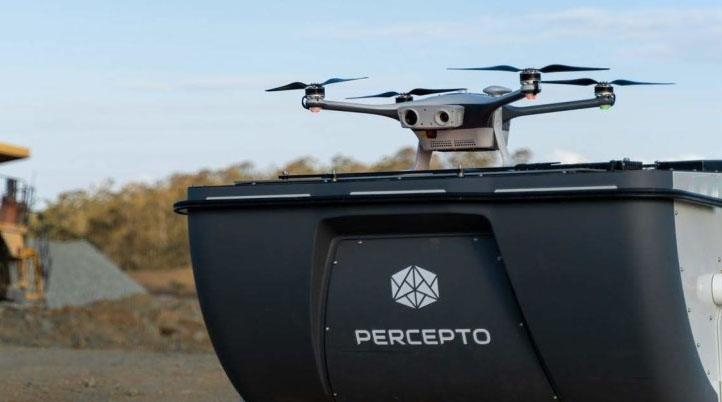This year has seen numerous major announcements from Percepto, including their FAA waiver to operate beyond visual line of sight as well as support that will allow the company to take its operations to the next level. We’re already seeing what that next level looks like as Percepto recently announced that the FAA granted them a nationwide waiver to operate a full fleet of Percepto drones remotely by one operator.
This new approval allows for the commercial operation of up to 30 drones, simultaneously with one pilot, potentially redefining drone automation and remote operations. It makes what had previously been a regulatory impossibility a practical reality by allowing autonomous inspections to be performed by drones at scale. Users can now operate up to 30 drone-in-a-box systems simultaneously.
Removing the Remote Pilot in Command (RPIC) changes the approach and costs that organizations have become accustomed to when considering drone adoption or attempting to scale their use of the technology. The leadership team at Percepto mentioned how this development will lower costs for new entrants seeking to utilize drones to enhance their operations for the first time but also encourages more market players to establish new drone programs. What exactly will that mean on an operational level though?
“Imagine shifting from one pilot visiting one site, conducting one inspection and producing one report to a turnkey service that can be remotely managed from anywhere, utilizing drone fleets that can conduct hundreds of daily inspections to produce countless reports,” said Geva Telem, Director of Marketing at Percepto. “Instead of a fragmented workforce and process, you can now have everything done by one RPIC from a remote-control center.”
The potential of deploying drones at scale is something that many have talked about and others have attempted, but the challenges with regulation, technology and application have limited adoption, even as drones have proven to make a bottom-line difference. This waiver means that adoption of the technology is now more cost-effective than ever in ways that can be measured. However, the true value associated with this news goes beyond the bottom line.
“If you want to scale your drone program, or build a new one, you’re talking about making significant investments in hiring and training personnel, purchasing multiple UAVs and then supporting all of it,” Telem told Commercial UAV News. “Would you rather do all of that or have Percepto RPIC running all your inspections across the country while also getting the data automatically analyzed and then delivered directly to your inbox?"
It's a question that oil & gas, utilities and other energy stakeholders will need to consider in a whole new way since this development means that the value drones enable on a single project can now truly, and finally, scale across an entire enterprise organization.















Comments